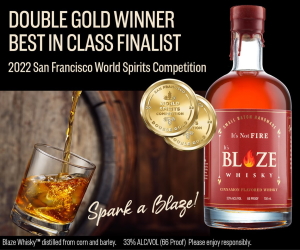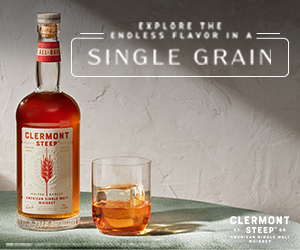
By Brian Mitchell
It’s early March as I write this and it’s snowing again. With the winter we have had, bar guests will be looking for a serious change of pace and their cocktail glass is the obvious place to start. Here are nine tips or trends to consider as you work through the process of updating to Spring-season menus:
1. GINGER
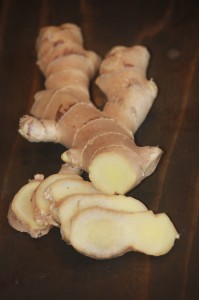 This is the magical rhizome loved the world over and used for centuries as a medicine, made into teas, as spice for food and cookies, or made into soda and ale. This is such a versatile ingredient. I like how it makes rum taste. On the bar you can pickle it and make a garnish, make a syrup for cocktails, or carbonate it for refreshing warm weather drinks. Whether you use ginger as the main flavor ingredient or as a background enhancer, this is a flavor/aroma that many people enjoy. Use it to build complex drinks.
This is the magical rhizome loved the world over and used for centuries as a medicine, made into teas, as spice for food and cookies, or made into soda and ale. This is such a versatile ingredient. I like how it makes rum taste. On the bar you can pickle it and make a garnish, make a syrup for cocktails, or carbonate it for refreshing warm weather drinks. Whether you use ginger as the main flavor ingredient or as a background enhancer, this is a flavor/aroma that many people enjoy. Use it to build complex drinks.
2. TONIC
There is a huge interest in the modern bar for using the flavoring known as “tonic.” Gin loves it, but so do other spirits. While the standard comes from yellow labeled bottles, early bartenders were much more familiar with making their own unique concoctions. The only problem is that tonic is not easy to make, at least at the beginning. Once you get the hang of it, it becomes much easier. The best way is to find or create a recipe for a base, and then use this base with soda and spirit for a final drink – kind of how it was originally done. You can make wonderful spice combinations and adjust them seasonally based on available ingredients.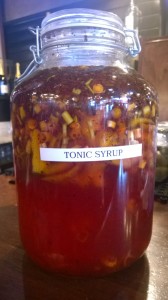
3. “BOOZIER” DRINKS
I know it sounds funny – but drinks need booze, Jim! I taste a lot of cocktails in the construction stages and there is frequently two things missing – booze and mouthfeel. Booze first. There is a reason why the martini and the Manhattan are the most popular drinks, and have been for 100 years; they are booze-forward and taste great when made properly. Adding too many ingredients in an attempt to be creative can soften that flavor appeal, so remember less can be more. Still, keep in mind the need to balance the flavors, sweetness and acid levels, as well as temper the alcohol. A good martini is a balance of smooth and cold (and made
with gin).
4. MOUTHFEEL
It might come from my wine background, but I like to not only smell and taste a drink, but also to feel a well-balanced drink…and so do a lot of guests. Small things make a big difference. Mouthfeel comes from several sources – sugar, alcohol, juices, syrups, creams, ice. It is also important to learn to make drinks efficiently so they will not get too diluted and watery. Taste your drinks and learn to understand how they feel on your palate as well as how they look
and taste.
5. FLAVOR ENHANCERS
Mezcal, cucumbers, smoke, Fernet-Branca, salt, orgeat, Chartreuse, rum blends, fresh fruit, honey, oleo saccharum, peat – so many options, so little time. That’s not true; there is always time to create more flavor. Build layers of flavor complexity in your drinks by using small amounts of extremely
well-made and flavorful ingredients. A float of Laphroaig or a spritz of Mezcal can make a huge difference to an otherwise “okay” drink. A few drops of saline will pull an amazing amount of flavor into your drink (that is why chefs use it for stocks). Set yourself apart by making drinks with layers of flavor.
6. SPICE
Peppers are hot! Well, they can be mild, medium or hot, and a lot of people like the addition of a little heat in their drinks. Heat goes way beyond jalapeños; so look for combinations that best suit your drink for spice, heat and sweetness. Do you want a sweet, smoky pablano flavor, the mellow lasting heat of ancho, or the intense burn of a habanero? Maybe a combination of all of the above. Integrating peppers into a drink can be as simple as pureeing and making syrup – this is a great way to control heat from the hotter varieties. Or perhaps take a little more interesting tack by fire-roasting for added flavor and aromas. Peppers can make interesting garnishes. You can also play the heat in a spicier pepper against a sweet component, such as a tropical fruit.
7. TEQUILA
One of my biggest growth areas in sales and guest requests is tequila. I have been a fan of the agave distillate for a long time, and I laugh when in a training session someone (and someone always does) says, “I can’t drink tequila.” Look for the “real” stuff made from Weber Blue Agave; the quality is better than ever. My personal preference for cocktails is the silver or blanco. The best ones have a purity of agave saltiness and earthiness that comes through without being masked by wood aging. These are perfect for cocktails. Lime is a common companion, but my preference lately is grapefruit. The combination of salt flavor in the agave matches so well with the white pepper in grapefruit.
8. GLASSWARE
Get some interesting glasses and use them. Glass manufacturers are putting out more interesting and classic styles of glass. But don’t be afraid to use a specialty glass to enhance your style. Second hand stores can be great places to pick these up. It is also very important for everyone to know the sizes of glassware on the bar. Bartenders may sometimes not correlate recipes to glass size and this can either cause waste if they make a drink too big or recipe variances if the drink is too small and an adjustment is needed. Know your recipes, know your glasses.
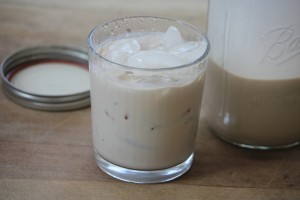 9. HOMEMADE IRISH CREAM
9. HOMEMADE IRISH CREAM
There are a number of recipes out there, all of which are easy to follow. Just find one that works best for you and tweak as you see fit. Your guests will appreciate the hand-crafted aspect of this drink and your pour costs will reflect the savings. In my recipes, I like to use espresso and dark chocolate, as I am going for layers of complexity in flavor.
So fear not! Spring is here and now you are tuned up and ready to go at the bar with a new selection of warm weather oriented cocktails. They’ll be in demand this year more than ever.
Brian Mitchell is the Corporate Beverage Director for the Max Restaurant Group. He is a 25 year drinks industry expert, specializing in sales, service and training. Follow him on Twitter @VintageVino and VintageBeverageWorks.com.








